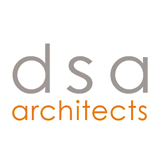Working with dsa architects
In every design task, large or small, we see the potential to create solutions that are beautiful and environmentally responsible. And while building projects tend to be lengthy and complex endeavors, they can also be a source of inspiration and fun. As architects, we collaborate with our clients to achieve buildings that meet their needs in a way that is sustainable and ecologically sound.
The design process can be broken down into phases: Pre-Design, Schematic Design, Design Development, Construction Documentation and Construction Administration. These phases are not just a linear sequence, but overlap and interact in many ways.
Pre-Design
The first steps of a project are to gain familiarity with the site and understanding of the client’s needs and goals, we call that the “program”. Oftentimes, the program is clarified or refined in this phase, as general expectations and desires are articulated. Other basic parameters are established as well, including code research, rough budgets and time lines. As a firm specializing in ecological design, we pay much attention to the site evaluation, including topography, solar access, wind and weather patterns, water, vegetation, and ecology at large, as well as to qualitative characteristics like light quality and views, or cultural context.
Schematic Design
Typically, several design options get explored and evaluated in the schematic design phase. The purpose is to find the right design concept without getting lost in details prematurely. This process is informed by the site analysis described above, as well as research of local building traditions and materials. Vernacular buildings represent the accumulation of generations’ worth of knowledge of local climate, and are good models for passive solar buildings and design pattern in general. Passive solar design is the backbone of our work, involving the overall shape and orientation of the building, its insulation and thermal mass, the distribution of openings, daylighting, natural ventilation and so on.
Site-specific concerns, combined with our experience with (green) building technology, form the backdrop for the creative process of translating the client’s program and preferences into a coherent design. The project begins to take shape, first as a loose sketch, and later as CAD plans and 3-D models. As constraints are encountered and various possibilities explored, we work closely with the client to focus the goals of the project into an innovative design that merges function, form, environment and budget.
Design Development
In the Design Development phase, the design that emerged out of the schematic phase gets refined, and the structure of the building evolves. There is still plenty of interaction with the client; for example, in optimizing the kitchen layout or discussing furniture placement. In a commercial project, the focus shifts to issues such as space optimization or adaptability. Interaction with consultants intensifies, typically involving structural and mechanical engineering. For smaller projects we can provide the structural engineering service, as well as energy simulations. Larger, more complex projects might require geologists, geotechnical and civil engineers, landscape architects, lighting or interior designers, acoustical engineers, and so on. Bringing in a contractor early is wise for any kind of project, primarily to help assess costs and allow adjustments while it’s still relatively easy. At the end of design development, all basic parameters of the building are established in plan, elevation and section.
Construction Documentation
Construction Documents are time intensive for the design professionals, and the client’s input might include selection of finish materials, deciding upon building components such as windows, or reviewing electrical-mechanical layouts. The bulk of the work is to incorporate the structural design and create a consistent plan set with all the information required to obtain a building permit. Often, details go beyond the minimum scope required for permit to ensure the architectural character and structural integrity of the building. This is particularly true for alternative building systems such as strawbale construction. In California, energy compliance (Title-24) has to be documented, too. While good passive solar design is the foundation of successful green building, active design strategies such as photovoltaic systems, solar thermal hot water or heat pumps can bring complete energy independence into reach. dsa architects has extensive experience with innovative building systems, whether for energy, water conservation or resource efficiency.
Construction Administration
After the project breaks ground, it is the responsibility of the contractor to implement the plans. However, a certain level of oversight is needed to ensure the proper execution of a design, and to make sure that a building reaches its potential. Requests for clarification or additional details may come from the jobsite. Good communication between the contractor and the architect is in the client’s best interest, and regular site visits during construction are of great value.
When it’s all done
We treasure close relationships with former clients and appreciate their feedback. We also value the great synergy between all the building trades and consultants involved. After thirty years and over 400 completed projects, dsa architects knows how to synthesize a client’s vision with the technical requirements necessary to produce a beautiful, healthy and environmentally responsible building.
